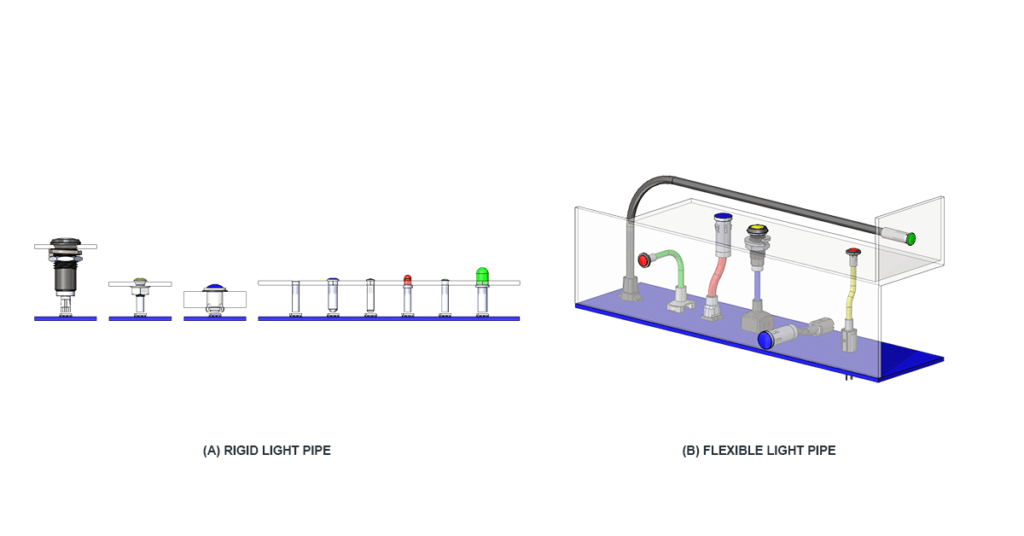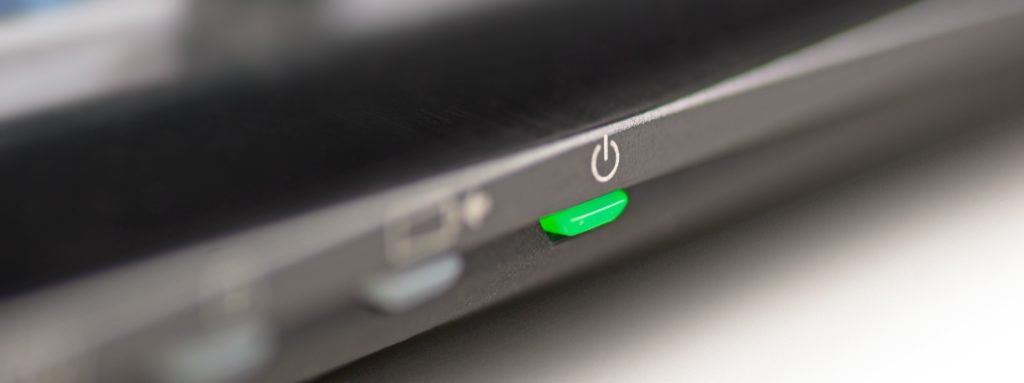Light pipes are a relatively simple, but critical part of electronic equipment design. They allow for compact designs, simplify PCB layout and increase ease for human factors engineers.
Without a light pipe, transporting light from one place to another can be costly and time intensive. But what exactly is a light pipe? Let’s find out.
Light pipe basics
Simply put, light pipes are a solid transparent plastic rod or an optical fiber that transmits light from a board-mounted LED to another location, often an indicator panel or display.
Thanks to their non-conductive nature and design, they require no crimped terminations or solder, while eliminating the risk of electrical shorts due to pinched wires. That’s why light pipes are used for many applications across various industries including healthcare, industrial automation, transportation, renewable energy, communications and more.
What are light pipes made of?
Building a light pipe takes many considerations, but when it comes to materials its critical to ensure both optical clarity and refractive index. Generally, light pipes are made of two materials: 94V-0 polycarbonate and plastic optical fiber (POF).
Polycarbonate offers several desirable properties for light pipe construction.
- Highly transparent
- A refractive index of 1.59
- Rigid, yet easily worked, molded, and thermoformed
- High impact resistance and durability
- High heat resistance, suitable for high-temperature environments
- Non-flammable.
Optical fiber made of acrylic resin, i.e., plastic transmits light through the core of the fiber.
- Core typically comprises over 95% of the fiber cross-section
- Made from the polymer PMMA with a refractive index of 1.49
- Surrounded by a cladding made of fluorinated polymers or silicone resin
In high-speed communications applications, optical fibers are made from glass, but POF possesses several advantages over glass optical fiber. These include:
- Light weight
- Flexibility
- Easy processability
The two categories of light pipes
Light pipes come in two categories: rigid and flexible. Figure 1 shows the two types.

Figure 1: Rigid and flexible light pipe (Source: Bivar)
Rigid light pipes carry light shorter distances in moderate to high vibration conditions and in damp or dusty environments. Available in many configurations, rigid light pipes can be vertical, right angle and multi-levels. These are designed for distances up to 3 inches and are constructed from polycarbonate.
They can also come in numerous configurations, including straight, right angle, single-unit, or multiple-unit, stacked or vertical arrangements. In short, when direct access is available rigid light pipes are an economical means of moving light from an LED to the indication area on the front panel.
Flexible light pipes, on the other hand, are preferred for moving light over longer distances or around obstacles between the LED and a front panel or other display location.
These light pipes consist of an adapter, providing little to no light bleed, and a flexible optical fiber with a lens cap. Beneficial in many applications, flexible light pipes do not conduct or transfer electrostatic discharge (ESD) pulses and offer immunity to electromagnetic interference (EMI).
Figure 2: A flexible light pipe system has several constituent parts (source: Bivar)
However, flexible light pipes require greater complexity and as such cost more than rigid light pipe alternatives. That said, when facing accessibility challenges for engineers, flexible light pipes give them the means to bypass components on the printed circuit board (PCB) that otherwise would prevent access to the desired indication area.
Figure 2 shows the various parts of a flexible light pipe design. The components consist of the LED at point A; a Zero Light Bleed ™ (ZLB) adapter that ensures no light bleeds into an adjacent pipe; a plastic optical fiber (POF); and a lens cap at point B that is bonded to the POF.
Conclusion
Although the concept of moving light from point A to B is simple on its own, successfully integrating light into a design requires careful attention to a range of considerations. Light pipes offer a cost effective and simple solution across a variety of applications.
To learn more about our light pipe technology or Bivar’s full range of products, contact us today!
1. Installation Considerations: re there any special considerations or tools required for the installation of light pipes in electronic equipment-especially when comparing the installation of rigid versus flexible light pipes?Rigid light pipes are often set through a hole in a panel to meet the LED on the PCB. Some with higher IP ratings use threaded nuts to secure the light pipe. Flexible light pipes will often have some type of base that attaches to the PCB over the SM LED, such as SZ, SZ IP54, SZR, and UHF.
2. Maintenance Requirements: What is the maintenance process for light pipes and how often is it required to ensure optimal performance and longevity?You can keep the lens indication faces clean with a soft cloth to avoid scratching the lens.
3. Design Customization: Can light pipes be customized for specific design requirements, such as color filtration or light intensity, and what impact does customization have on their cost and production time?As every custom projects have different requirements, we will need more details about your specific project. Contact us by submitting a form with your information and details about your project and we can work with your specific project.
